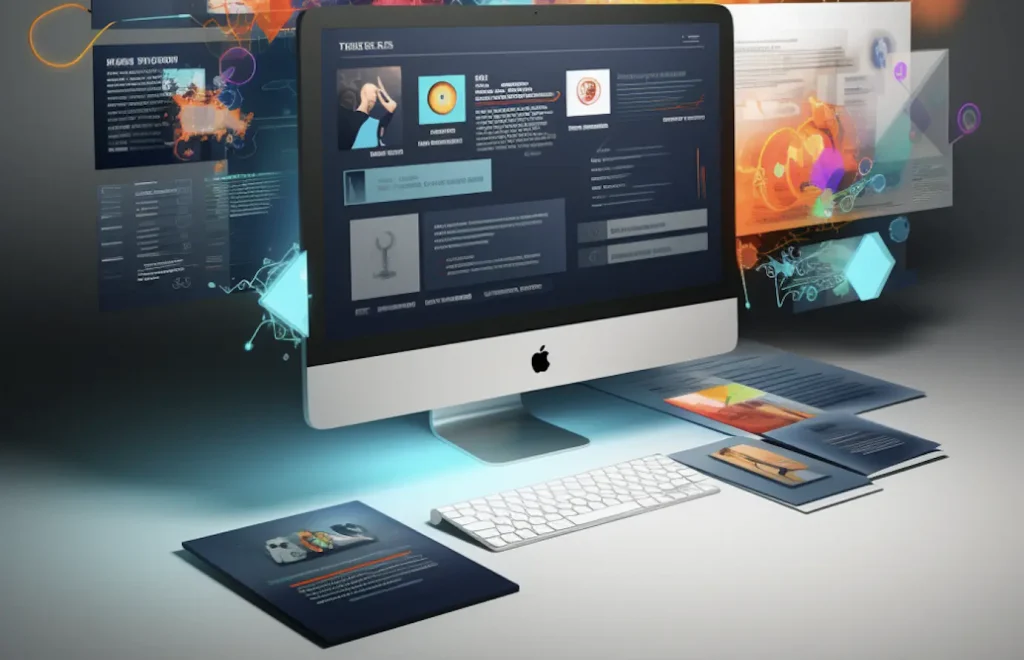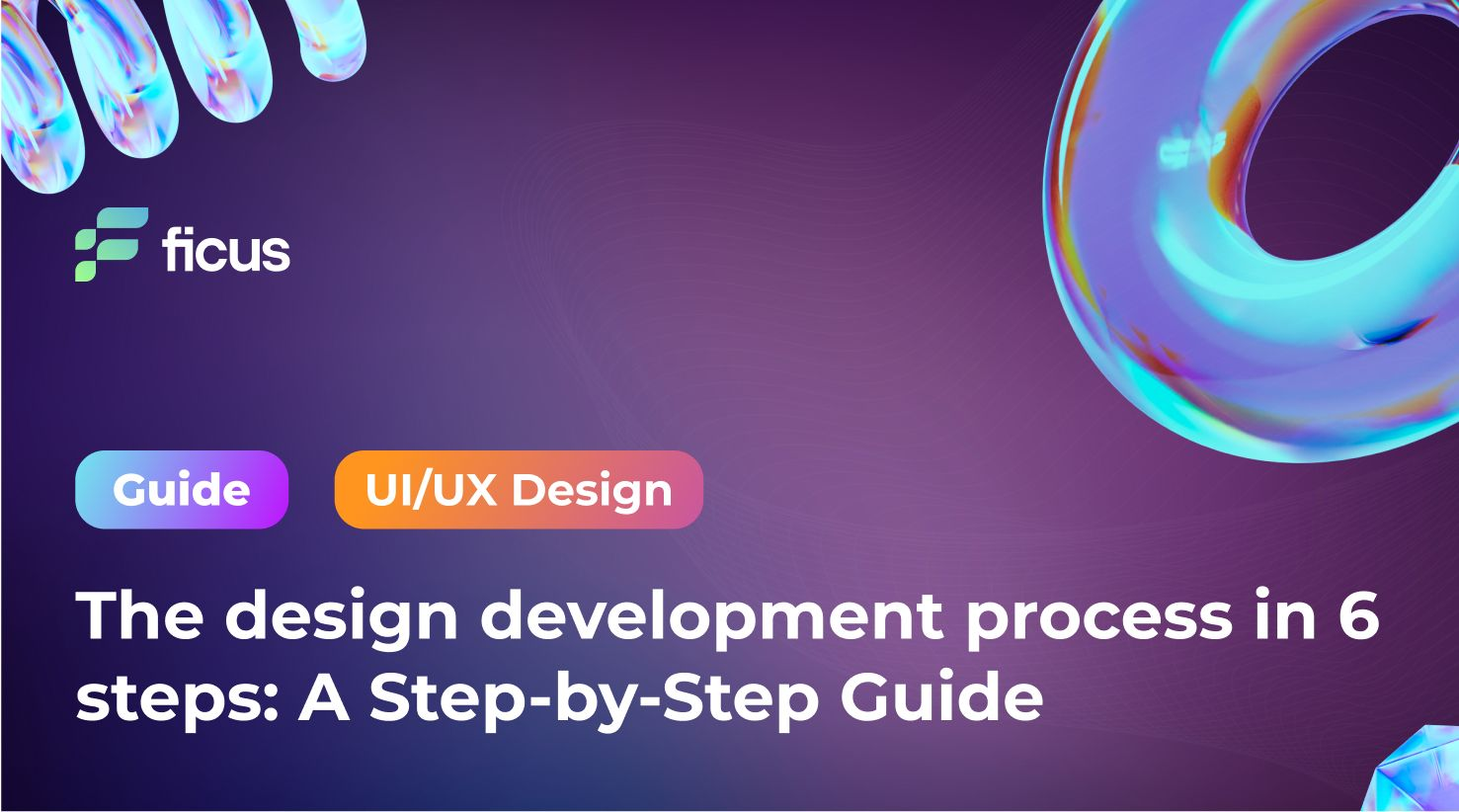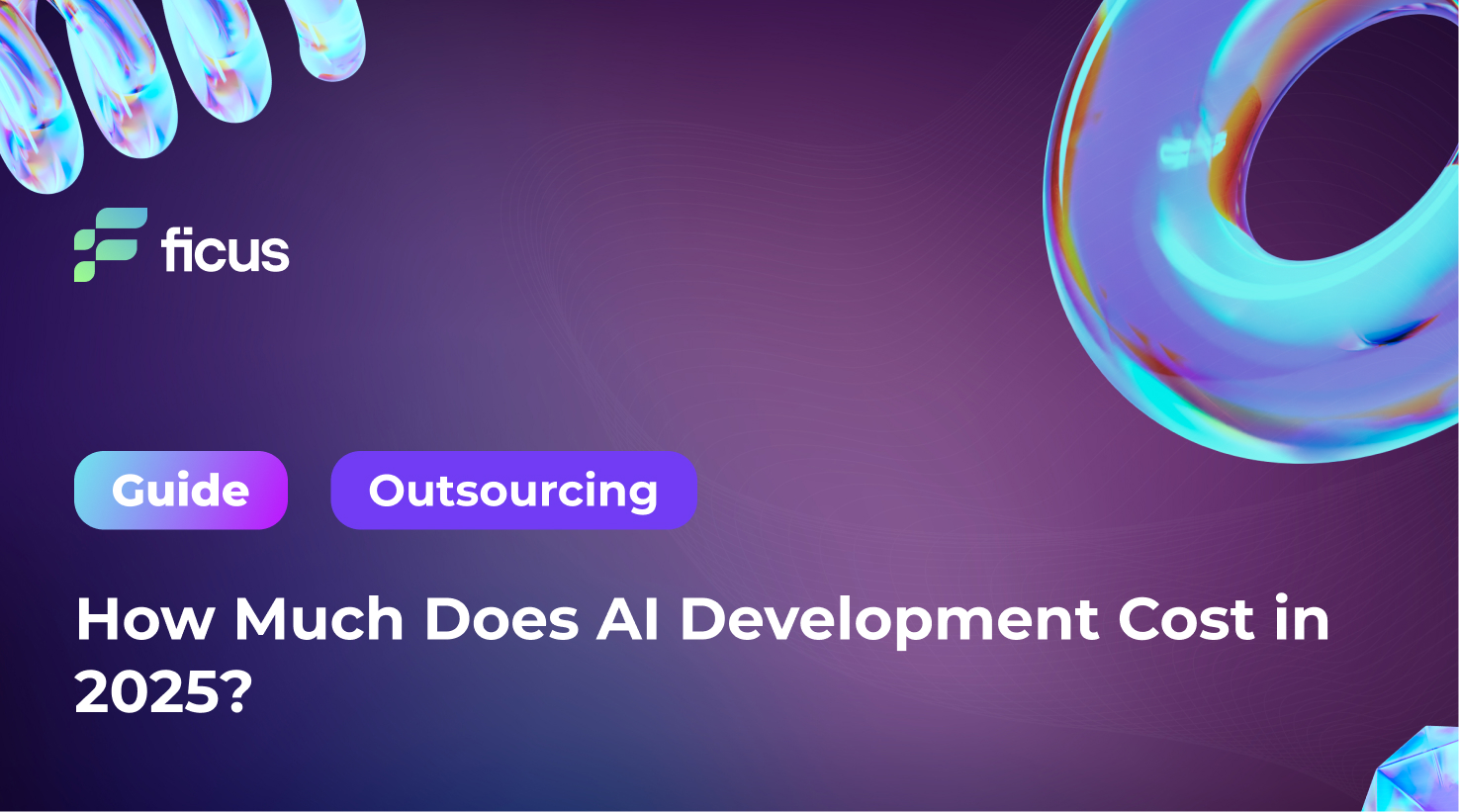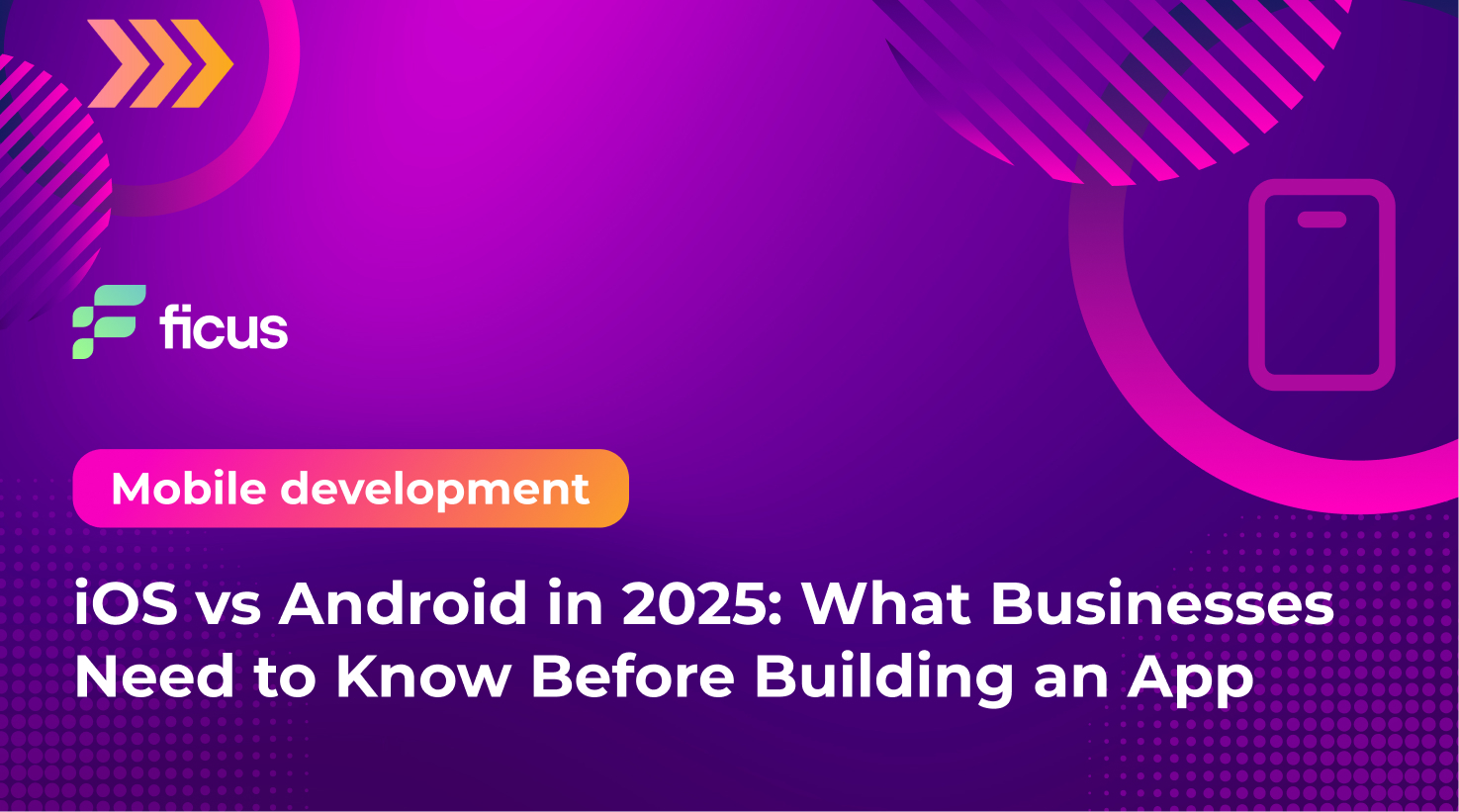Think of the digital experiences that are seamlessly woven into your daily life: scrolling through Instagram or TikTok, searching for travel destinations on Google, or easily ordering groceries through Amazon or Instacart. Each of these digital wonders started as a simple concept that evolved through a careful design development process.
From the nuances of the button angle radius to the overall performance, each facet has emerged from a journey through the design process. This article reveals the intricacies of this process, exploring its significance. Join us to learn what the design and development process involves and why the evolving path from concept to final design is paramount for design teams.
- Designing a website is a complex process that requires communication, research, and skill.
- The article outlines six crucial steps in the web design process.
- Early communication with clients and attention to detail are emphasized.
What is the Design Development Process?
At its core, the design development process is a transformative way to create a detailed and complex project. Uniquely tailored to each project, this process produces key deliverables for architects and their team of consultants. It is a key stage in which concepts are transformed into concrete plans, shaping the trajectory of the design and development process.

Analysis of Materials and Systems
In the design development process, a thorough analysis of materials and systems is of paramount importance. First, our experts thoroughly examine the exterior and interior work materials, offering preliminary cost estimates and a comprehensive life-cycle cost breakdown. This step contributes to a deep understanding of the long-term consequences associated with each material choice. Collaborating with mechanical, electrical, and plumbing (MEP) engineers, our architects thoroughly review systems and equipment, providing a thorough assessment of life-cycle costs. Structural engineers and landscape architects contribute to this process by proposing various site plan options. Emphasizing a holistic approach, we guide the decision-making process, delving into the choice of technologies, lighting, site design, furniture, and signage. Visualization tools, including 3D models, provide a progressively more detailed and accurate representation, providing a crystal clear view of the final product by the culmination of the design phase in the design and development process.
Cost Estimates
In the complex design development process, cost estimates play a key role. As you begin the journey from conceptual design to the final stages, our experts will provide you with a probable cost estimate and a preliminary financial overview of the project. This estimate becomes increasingly accurate as you make informed decisions about materials and systems. Depending on the project delivery method you choose – design-build or design-bid-build – our architects can work closely with your contractor. This joint work ensures a comprehensive determination of material costs. In addition, in design-build-negotiate-bid projects, our architects can engage a third-party cost estimator to refine the financial forecast. By culminating the design and development process, a clearer understanding of the cost of building your project emerges.
Good design is making something intelligible and memorable. Great design is making something memorable and meaningful.
Dieter Rams
Why does the design development process matter?
The design development process is more than just a procedural formality; the linchpin elevates a concept to a functional and aesthetically pleasing reality. It goes beyond simple time and talent, requiring clarity and collaboration across a diverse team. The process ensures valuable input at every critical stage by engaging designers and cross-functional stakeholders, including product managers, researchers, analysts, and developers. By offering a disciplined approach, it becomes a compass that guides creative teams toward clear and meaningful goals. In addition to being important for designers, it sets healthy benchmarks, ensuring that design concepts meet user needs while maintaining brand integrity. In this way, the design and development process becomes a conduit that transforms creative vision into tangible excellence.
Looking for ways to improve your design process?
Contact Us6 Steps of Web Design Development Process
Creating the look and feel of a website requires careful thought. We’ve broken down the web design process into distinct steps to simplify the process. These six steps lead seamlessly from conceptualization to a fully functional and visually appealing online presence.
Step 1: Information gathering
In the first step of the transformative design development process, information gathering takes center stage, laying the groundwork for success.
A close-knit design team emphasizes extracting all the important details crucial to the project’s development. Relevant questions are asked to delve into the intricacies of the business needs. The client’s requirements are then scrutinized, and the purpose of the site and specific goals – information sharing, revenue generation, or a symbiotic combination of both – are carefully defined.
The team considers how these business goals fit seamlessly with the potential of a well-built website. A thorough study of the target audience is then conducted, finding out details about their age, interests, and habits, which helps determine the most appropriate design style.
Designers immerse themselves in understanding the website’s content, recognizing the integral and vital relationship between content and design. This fundamental understanding lays the foundation for the project schedule and preliminary plan that guides the design and development process.
Step 2: Planning and strategy, wireframing
Moving on to the second step of the design development process, we move from data collection to creating a detailed plan for our website.
Here, we can think about creating a sitemap – a comprehensive list of all the main themes and possible sub-themes. This will become our guide, explaining where each piece of content fits in and how users will navigate through it. Our goal? To create an online space that is easy to learn and user-friendly for our future customers.
As we chart this course, we stay connected to our audience – considering their age, interests, and habits while honing our design style. It’s a practical tool where content and design flow seamlessly into each other throughout the design and development process.
Step 3: Graphical design
Graphic design, part of the creative scope of the design development process, is a key step that uses visual elements such as logos and brand colors to reinforce a website’s brand identity.
Here, the design team carefully develops one or more prototypes, offering a visual snapshot of the final website. These prototypes, often static images, serve as a tangible representation of the site’s aesthetics. Another step forward is the creation of clickable prototypes, allowing clients to experience the feel of the site before development begins.
At this stage, communication comes to the forefront, with clients exchanging emails and utilizing content-sharing services like Dropbox or Zeplin. Ensuring the client’s ongoing involvement in the design and development process is key to aligning the final website with their needs, tastes, and vision. This is the stage where ideas are shared and brainstormed together to form the visual identity of the future site.
Step 4: Development/build
Moving from design to reality, the design development process enters a crucial phase: development or creation.
While the design appears as static images, a focused development process transforms it into functional HTML/CSS. This includes adding animation or JavaScript as needed, determined by the intricacies of the design.
The process unfolds systematically. Starting with the home page, a fundamental “shell” for the internal pages is created, which serves as a template for the main menu. The design team then populates these inner pages with content, integrating interactive elements like contact forms and functional e-commerce shopping carts.
The important point at this stage is constant communication. Regular updates allow clients to observe changes to the site, which helps make necessary adjustments. Designers skilled in the basics of front-end development further facilitate collaboration by ensuring the code complies with web standards and different browsers.
Everything must be thoroughly tested after all of the design and development work is completed.
Step 5: Testing
The testing phase comes to the forefront when the design development process is nearing completion.
Once the content and visuals are ready, thorough testing begins, testing each page to ensure smooth functionality. Particular attention is paid to link integrity and cross-browser compatibility to ensure that the site displays flawlessly on various platforms.
Even the nuances of word order in titles and descriptions are weighed, considering their impact on the site’s performance in various search engines. This attention to detail is critical to optimizing site visibility and user experience.
In later stages, as site traffic grows, advanced techniques such as A/B testing come into play. These methods help determine the best mix, refine, and improve the site’s performance after launch. Thus, testing becomes the linchpin in the complex design and development process.
Step 6: Delivery and launch
As the curtain falls over the complex design development process, the climax comes – step 6: delivery and launch.
Having received final client approval, the website enters the digital arena. Before the grand opening, a thorough test must be performed to ensure all files are uploaded correctly and the site fully functional.
Finally, the site’s domain name must be registered, hosting must be set up, and the necessary plugins must be installed for CMS-based sites such as WordPress. The focus then shifts to search engine optimization (SEO), a key part of increasing visibility. SEO is fine-tuning a website’s title, description, and keyword tags, allowing it to rank higher in search engines. The final touch is making the site accessible so that users can easily find it after launch, which marks the triumphant completion of the design and development process.
How Can You Prepare for Design Development?
Preparation for the design development process is paramount, and effective decision-making is key. We offer you a guide:
- Decision-making system: Create a robust decision-making process. Identify the key decision makers and designate a point of contact to communicate decisions to the project manager. Good communication between the architect and client is crucial for a smooth design process.
- Clear project goals: Clearly define the goals of your project. Understand the main goals, as design development may require budget-driven decisions. Keeping long-term priorities in focus will help you make the best use of your budget.
- Collaborative communication: Facilitate effective communication between stakeholders. A streamlined dialog between the architect and the client increases the efficiency of the design process.
Implementing these methods creates the prerequisites for a successful and collaborative design and development process.
Final Thoughts
When we delve into the complex realm of digital transformation, the design development process acts as an artisan, intricately weaving ideas into a practical and visually appealing reality. From the first steps of gathering insights to the grand presentation of a fully functional website, each stage orchestrates a dance between creativity and functionality.
At Ficus Technologies, we understand the pulse of this process. Our Ficus Technologies team of technical experts works closely with you. We don’t just analyze materials; we understand your project’s essence. Whether you’re starting from scratch or updating your online presence, we’ll help you through every step of the design and development process.
Prototyping in design development serves as a tangible preview of the final product, allowing designers and stakeholders to interact with a scaled-down version. It fosters a clear understanding of functionality, user experience, and aesthetics. By identifying potential issues early and facilitating iterative improvements, prototyping minimizes risks, enhances collaboration, and ensures the end product aligns closely with initial concepts, contributing significantly to the overall success of the design development process.
The Design Development Process is pivotal in project cost management by providing a systematic framework for analyzing materials, systems, and associated costs. Through thorough examination and collaboration with engineers and architects, it enables accurate cost estimates, offering transparency and informed decision-making. As the process advances, it refines cost projections based on material and system choices, aligning the project with budget constraints. This proactive approach minimizes the risk of cost overruns and ensures a comprehensive understanding of financial implications at each stage, ultimately contributing to effective project cost management.









The author carefully describes each step, offering insightful advice and practical examples. The clarity, brevity, and emphasis on research, ideation, prototyping, and refinement make the article an essential resource for designers of all levels. The guide enables designers to confidently and creatively navigate the design development process.
The author’s expertise shines through as they break the process down into six clearly defined steps, providing practical advice and clear examples. Their emphasis on research, ideation, prototyping and refinement demonstrates a deep understanding of the design process. This guide is an invaluable resource for designers seeking to master the art of design development.